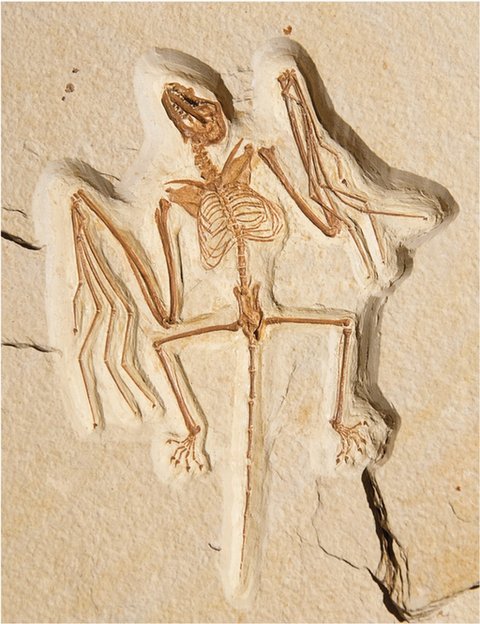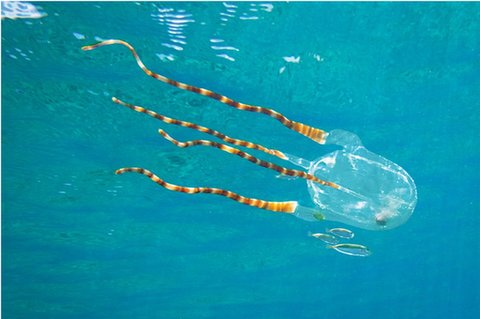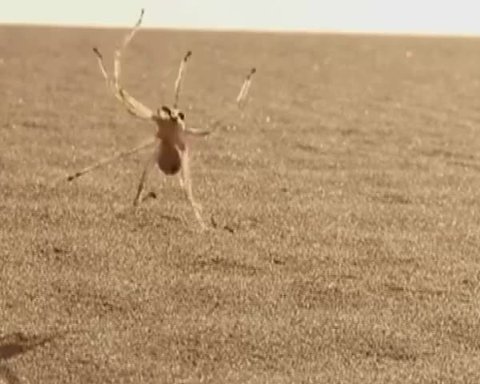
Finney’sbat
What’sOldIsNewAgain
ThesummersunbeatsdownontheWyomingrocks.BonnieFinneyholdsalargeslabonitsedge.Shehammersasmallwedgeintotherock.Acrevicespreadslikeasmile.Thenthecreviceopens.Theslabpopsopenlikea book.
Insideisa50‑million-year-oldbatfossil.Itdoesn’tlooklikeanybatshe'severseenbefore.It’slargerthannormal.Ithasaclawoneachofitsfingersinsteadofjustoneortwo.Morethan10yearslater,scientistsagreethatthisbatisfromalong‑extinctspecies.Itwasn’tnew,butitwasnewtomodernscience.ItwasnamedFinney’s bat.
FlipFlop
HeatrisesupfromtheMoroccansands.IngoRechenberg,ascientistfromGermany,looksaroundatthedunes.Nothingismovingexcepttheheatwaves.Hesquintsinthesunlightandspotsasmall spider.
Rechenbergisaroboticsscientist.Heisinterestedinhowthingsmove.Hestepsforwardtocatchthespider.Thensuddenly,itflipsandcartwheels away.
Rechenberghadneverseenaspidermoveinthisway.Neitherhadanyoneelse.Itwasanewspecies,nowknownasCebrennusrechenbergi, theMoroccanflic‑flac spider.
Moroccanflic‑flac spider
Boy,OhBoy!
Whenitcomestojellyfish,therearebell‑shapedandbox‑shapedjellies.Bell‑shapedjelliesmoveatthewhimofthecurrentsandwind.Boxjelliescansteertheirbodies.Manyofthemare poisonous.

Bonairebandedbox jelly
TheBonairebandedboxjelly (Tamoyaohboya) isnoexception.Withitstoxicwartsandstingers,thisjellywasspottedbyatleast50swimmersin1989.Itwasgivenanickname,butwasn’tofficiallynameduntil2011.Ateachernamedit.Ohboyarefersto“Oh,boy!”.That’sfortheexpressionyoumightusewhenyoufirstsee it.
Anyonecanstudytheworldaroundthemandnoticethings.It’scalledcitizenscience.Informationapersoncollectscanbesenttoscientists.It’svaluablematerialandcanmakeabigdifferenceinstudyingthehugevarietyofbiodiversityon Earth.
Earthisfacedwithpollutionandclimatechange.Theenvironmentischangingrapidly.Fromadaptingtotheenvironmenttofightingdisease,thereismuchtolearnfromnewspecies.Discoveringandstudyingnewspeciesisvitalnowmorethan ever.
